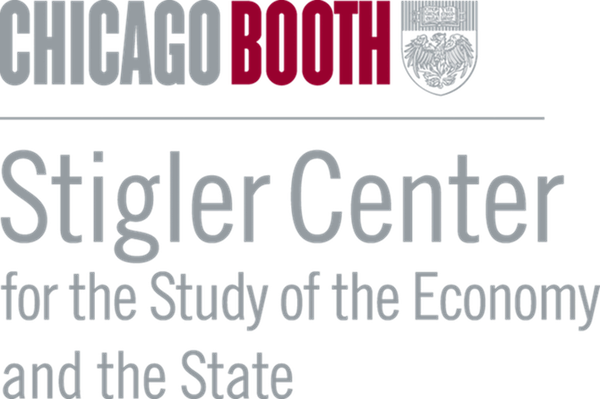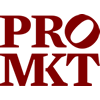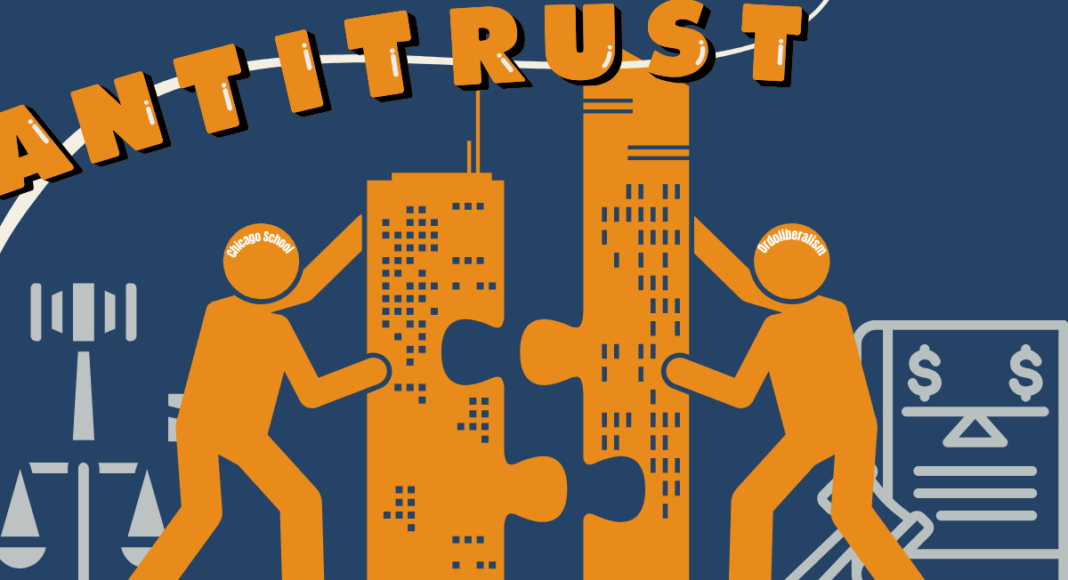In new research, Ryan Stones revisits the alleged disagreement between two influential schools of antitrust on how to handle big businesses. Instead of finding contrasting policy recommendations, he highlights a strikingly similar relaxation of attitudes toward enforcement in the Chicago School and Ordoliberalism in the post-war period.
The competition law community cannot resist talking about schools of thought: “Harvard,” “Chicago,” “Neo-Brandeis,” “Ordoliberalism,” to name a few. As commonly understood abbreviations, schools of thought facilitate our conversations about antitrust policy as well as offer a potted history of the development of our field to new recruits. If we affiliate with one, they are also like a sports team, where we can closely follow their highs and lows with like-minded supporters.
Still, using schools to shorthand collectives of ideas is not without risk. In the 1960s, George Stigler warned that the concept of an academic school can lead to a “slovenly stereotype.” Others have highlighted how they may gloss over internal disagreements and nuances.
But there is one aspect of our fascination with schools in antitrust that has largely been overlooked. Contrasting groups from different periods may be artificially exacerbating perceived disagreements between them, masking the surprising similarities visible when we instead compare historical like with like.
This may be the case when it comes to two schools largely thought to have diametrically opposed antitrust policies towards big business: the seemingly radical deconcentration associated with Ordoliberalism and the supposedly hands-off approach of the Chicago School.
The classic story of “Ordoliberalism” versus “the Chicago School”
Accounts of the antitrust clash between Ordoliberalism and the Chicago School often go as follows: Ordoliberalism arose at the University of Freiburg in the 1930s from interdisciplinary research into the most desirable economic order, led by the economist Walter Eucken and lawyer Franz Böhm. The Ordoliberals rejected laissez-faire economics due to its lack of competition policy, which they argued should be vigorously enforced by an independent authority. Accounts of Ordoliberal antitrust often highlight their goal of economic freedom and desire for complete competition, leading them to push for the dissolution of big businesses. Even though abandoning economies of scale might increase prices, this was considered a worthwhile sacrifice to protect small businesses.
Ordoliberal antitrust is thought to contrast sharply with the Chicago School, whose formative figure was the economist Aaron Director. From the late 1940s, Director taught a weekly antirust session examining legal issues through the lens of neo-classical price theory, as well as leading two five-year research projects into free markets and competition policy. These inspired a new generation of thinkers to recommend the scaling back of antitrust enforcement, best captured in Robert Bork’s The Antitrust Paradox (1978). Chicagoan antitrust was animated solely by the goal of efficiency. As big businesses either reflected economies of scale or simply being the best at giving consumers what they wanted, the Chicago School condemned using antitrust to block most mergers or break up large firms. Its adherents argued this would push up prices, punish success, and protect the inefficient.
When recounted in this manner, the divide is stark: the Ordoliberal pursuit of economic freedom led them to recommend the eradication of market power, while Chicagoan antitrust emphasised the efficiency of big businesses. It is an engaging tale of the battle for the soul of antitrust, currently deployed to explain the evolution of European Union competition law and inform how antitrust can address the dominance of the digital economy titans.
But the ferocity of this foundational fight has been exaggerated. It results from freezing both schools of antitrust at particular periods in time: Ordoliberalism as an artefact of the1930s and 1940s against the Chicago School from its 1950s gestation to 1970s heyday. If we instead analyze in tandem the development of both schools over the entire period, what becomes apparent is their similarities, not differences. Both Ordoliberals and Chicagoans relaxed their antitrust attitudes towards large firms, following decades of advocating for the eradication of industrial titans.
Filling in the historical gaps
The fixing of Ordoliberalism and the Chicago School at different points in the 20th century leaves two gaps in the history of antitrust thinking.
The first is Chicago in the 1930s and 1940s. When Ordoliberal pioneers Walter Eucken and Franz Böhm were advocating business break-ups in the pursuit of economic freedom, what did Chicagoan antitrust policy look like?
Well, as some have flagged, pretty much the same.
Before his death in 1946, antitrust thinking at Chicago was dominated by the economist Henry Simons. Simons claimed that if there were a single word to describe his agenda, it would be “deconcentration.” In his 1934 A Positive Program for Laissez Faire, he considered big business to be the enemy of democracy and cause of societal instability. He therefore recommended the dissolution of giant corporations—anything supplying more than around 5% of the market—and a ban on horizontal mergers. Simons acknowledged that this would sacrifice efficiencies resulting from scale, but—like Ordoliberal contemporaries—was willing to do so to preserve economic freedom.
Simons was supported at Chicago by his mentor and celebrated neo-classical economist, Frank Knight. Knight was also reluctant to tolerate big business owing to their alleged efficiencies. His pioneering work in the 1920s refining microeconomic theory also argued that economies of scale were exaggerated. Knight’s more philosophical writing on the ethics of competition in the late 1930s further criticized the impact of economic titans on smaller businesses and democracy. Nor was he persuaded by arguments about the weakness and fleetingness of monopoly, which he dismissed as laissez-faire dogma.
The second historical gap is post-war Ordoliberalism. From the 1950s to 1970s, when Aaron Director and his disciples were pushing the efficiency of scale at Chicago, was West German antitrust discourse still calling for the deconcentration of industry?
No, as a similar softening of sentiments towards big business also occurred.
During the post-war reconstruction of West Germany, Ordoliberal thought largely evolved into the concept of the “Social Market Economy” (SME). Intellectual leadership for this reorientation largely came from the writing of economist Alfred Müller-Armack. While he had some role in the delivery of the SME as a member of the West German Ministry of Economics, its realization largely fell to Ludwig Erhard, minister for economics from 1949 and chancellor from 1963-1966. Despite differences on social policy, both Müller-Armack and Erhard saw the SME as the refinement and, ultimately, delivery of earlier Ordoliberal thought.
As with the post-war shift seen at Chicago, SME advocates in Germany recognized the efficiency of industrial scale and therefore recommended a less interventionist antitrust. Indeed, Erhard was labelled the “Minister for Heavy Industry” by his detractors, though he claimed to be motivated by reducing prices for ordinary consumers. As retold in Prosperity for All (1957), his priority was to increase wealth through greater productivity, making him keen to see the benefits of economies of scale. In the 1960s, Müller-Armack similarly saw efficiencies as responsible for the higher standard of living in West Germany, making hostility to economic concentration an unwise policy. Both considered the growth of efficient, pan-European businesses a key benefit of European integration, and shifted their emphasis towards controlling the abuse of economic power, not its very existence.
Adherents to Walter Eucken’s vision for competition could consider 1957 to be an annus horribilis for “Ordoliberal” competition law. Both West German legislation and the Treaty of Rome founding the European Economic Community failed to tackle big business at root, instead ushering in regimes for overseeing mere abuse of dominance. What such analysis fails to appreciate though is that by the late 1950s, Ordoliberalism had developed from its 1930s and 1940s agenda for deconcentration, just like the Chicago School.
Evolution, not revolution
The supposed clash between Ordoliberal and Chicago School approaches to big business is largely overdone. It is a direct consequence of clashing “Old” Ordoliberalism with “New” Chicagoan thinking, whereas comparing historical like with like reveals a parallel shift in policy perspectives around the middle of the twentieth century. In the 1930s and 1940s, both Ordoliberals and Chicagoans recommended industrial deconcentration in pursuit of economic freedom, while from the 1950s an emphasis on efficiencies also led both groups towards a more relaxed antitrust agenda.
Still, concluding that there were instead four schools—“Old” and “New” Ordoliberalism, “Old” and “New” Chicago—would be a major simplification of what happened. Of course, some thinkers can be neatly categorized; Simons and Eucken were gone before their respective schools changed perspectives, while Bork and Richard Posner were writing when Chicago had already shifted into its famous form. However, for several protagonists usually associated with an “Old” or “New” school, their perspective on big business evolved throughout this period, preventing any clean divide.
Some of the “Old” became “New.” For example, Knight is cited in Bork’s Antitrust Paradox in support of the productive efficiency of big business. This is because despite his earlier scepticism, by the 1950s Knight believed that using antitrust to pursue atomistic markets was to sacrifice economies of scale. Similarly Böhm thought by the mid-1950s that large businesses reduced operating costs and were effectively disciplined by competitive pressures to perform. As recently argued, this explains his position during the drafting of the 1957 German legislation, which opted for oversight of abuses by dominant firms, rather than their deconcentration.
Conversely, some of the “New” were once “Old.” Director’s conversion of those who had supported Simons’ agenda of deconcentration is well known (e.g. Edward Levi, Ward Bowman), leading to the common suggestion that he was the revolutionary break between “Old” and “New” Chicago. But as revealed by Rob van Horn and William Kolasky, Director went on his own intellectual journey in the late 1940s. At the first meeting of the Mont Pèlerin Society—the intellectual fount of neoliberalism—in 1947, Director advocated the dispersion of economic power, rallied against large firms, and even suggested a limit to their size. The first respondent to Director’s proposed antitrust agenda was supportive; it was Walter Eucken.
—
The late 1940s and 1950s marked a major shift in antitrust approaches to big business on each side of the Atlantic. Both Chicagoan and Ordoliberal antitrust reflected this evolution. While the usual account of a fundamental clash between two rival schools of competition law is a gripping tale and continuing source of inspiration, it primarily results from failing to compare historical like with like. Still, fact may not be duller than fiction here, for an intriguing question remains unanswered about the history of antitrust policy: why did so many thinkers who had hitherto condemned big businesses suddenly change their mind?
Author Disclosure: In accordance with the ASCOLA Declaration of Ethics, I can disclose that this research was not externally funded and I do not have links to any potentially interested third parties. You can read ProMarket’s disclosure policy here.
Articles represent the opinions of their writers, not necessarily those of the University of Chicago, the Booth School of Business, or its faculty.






